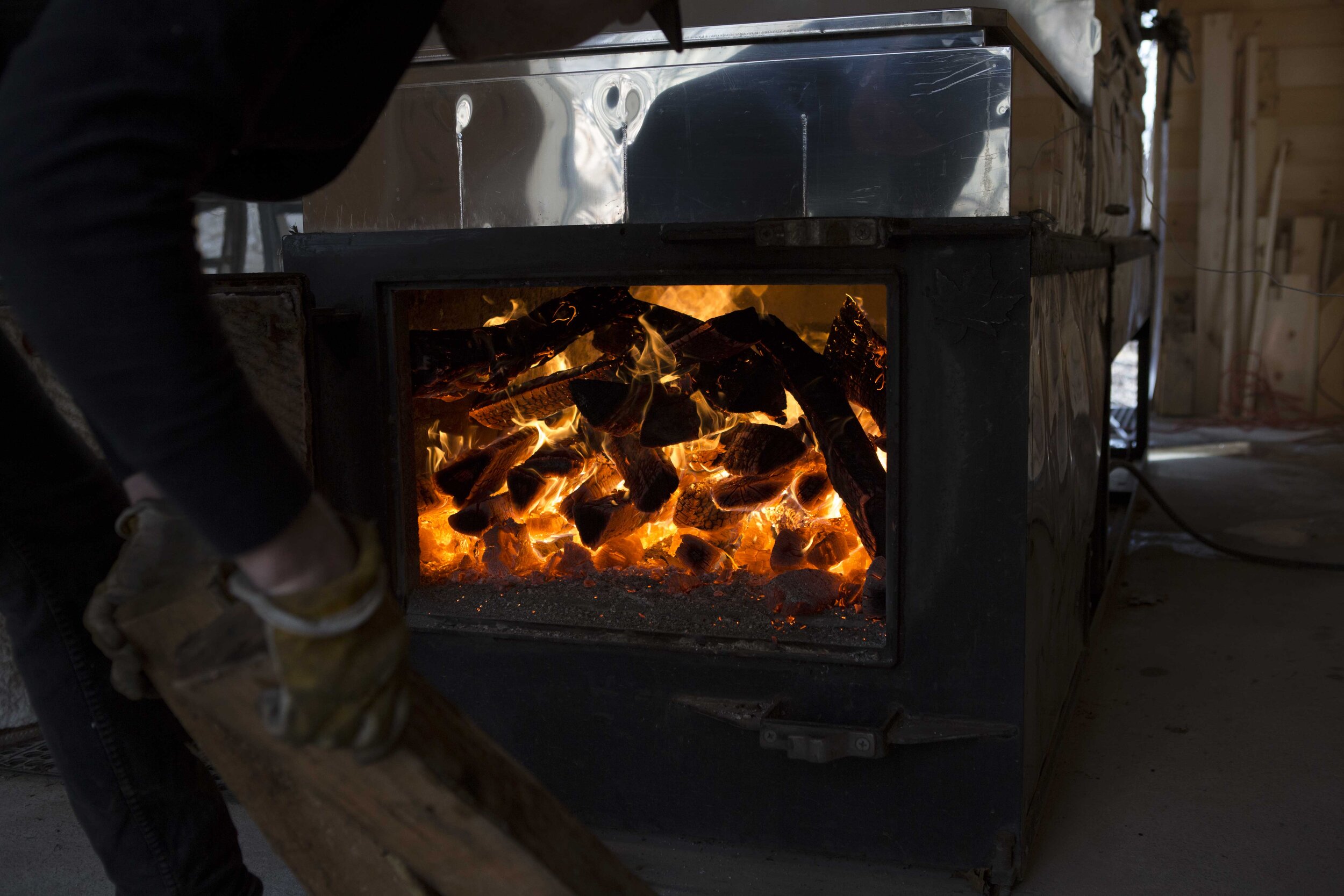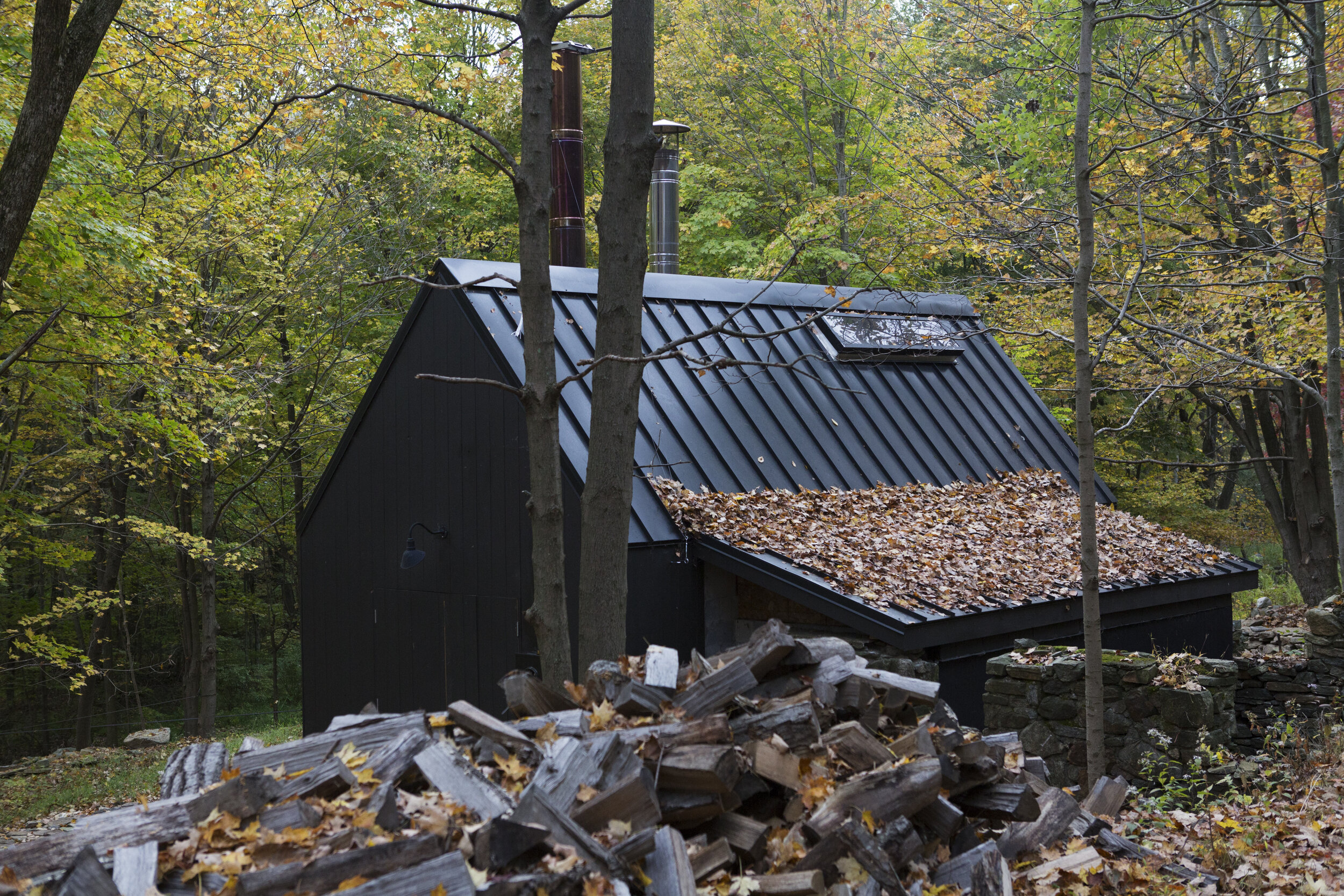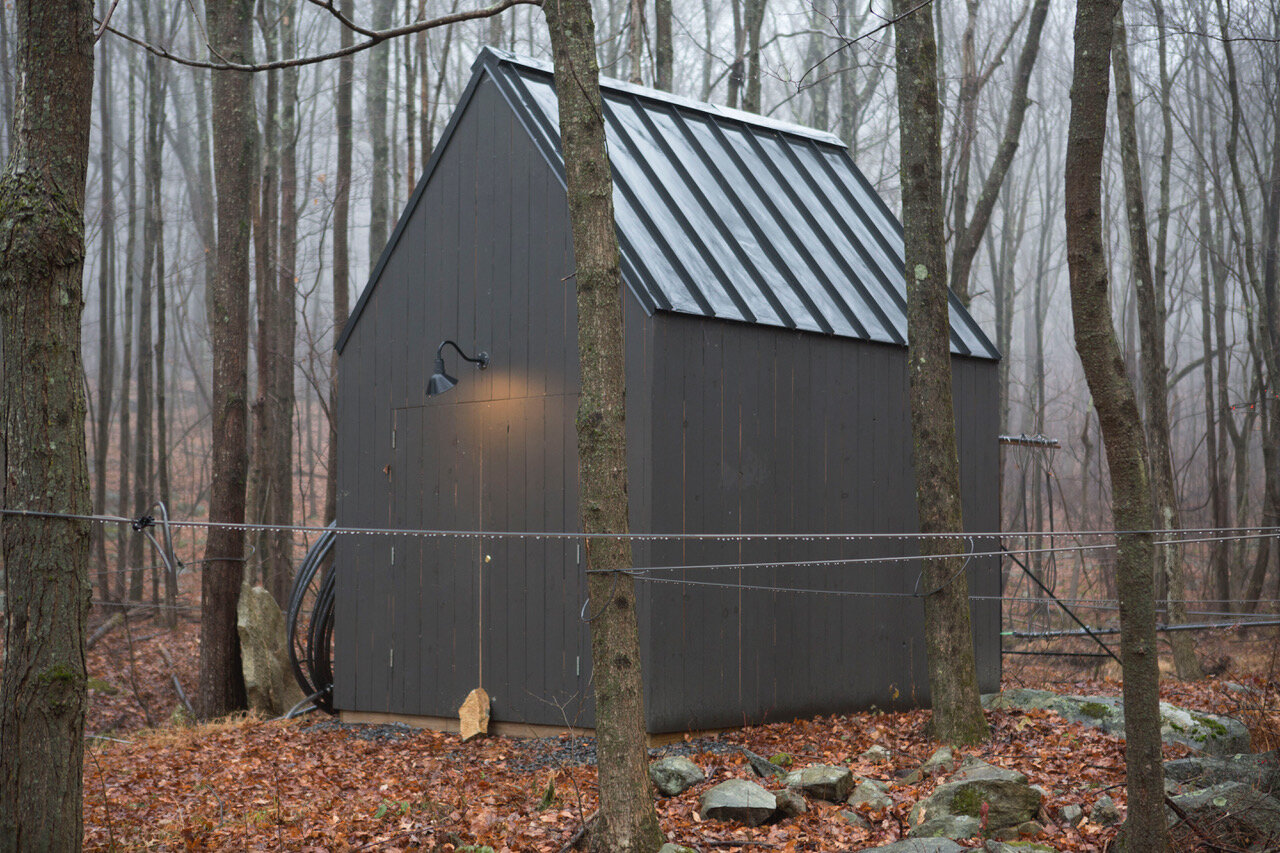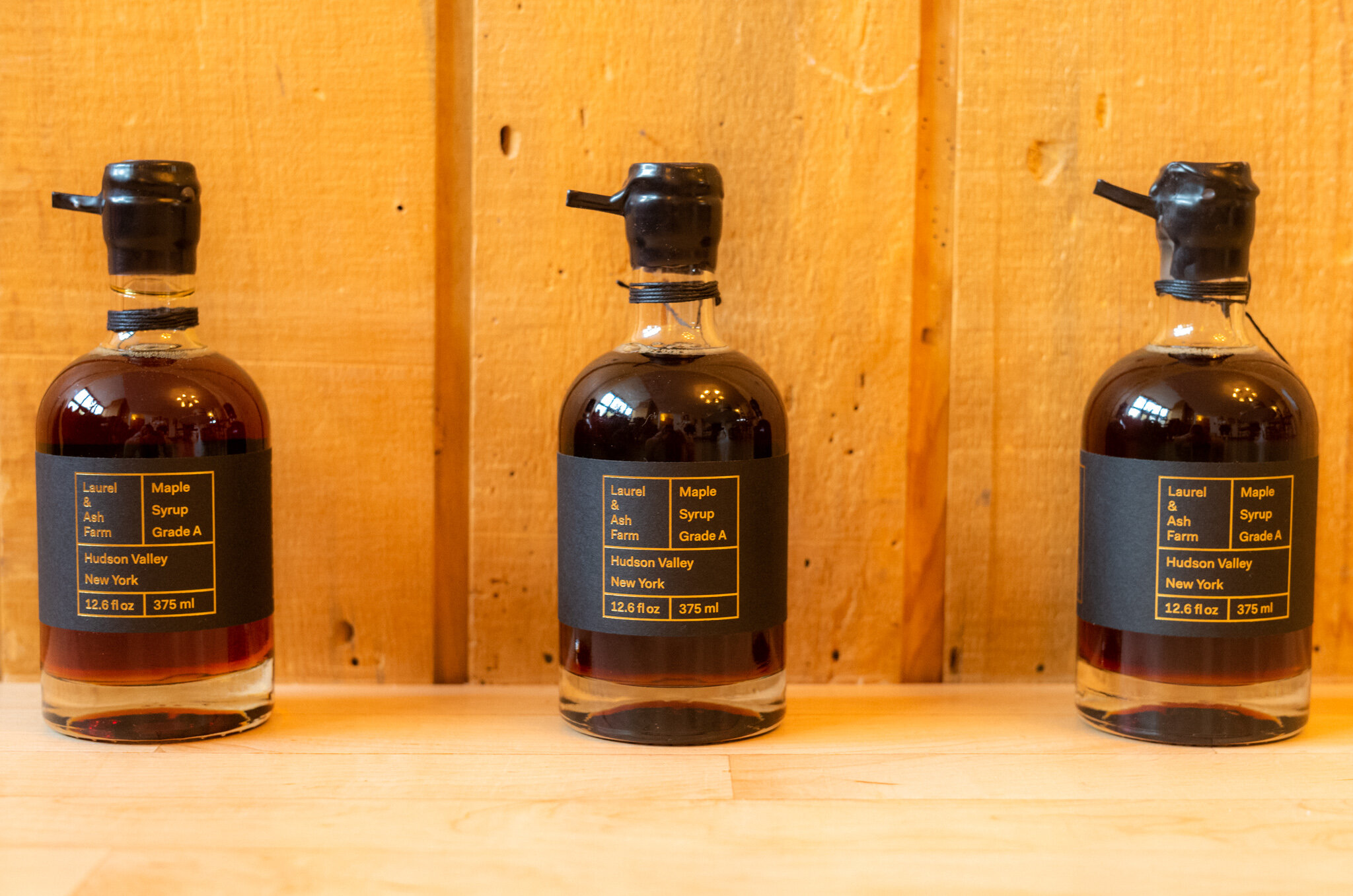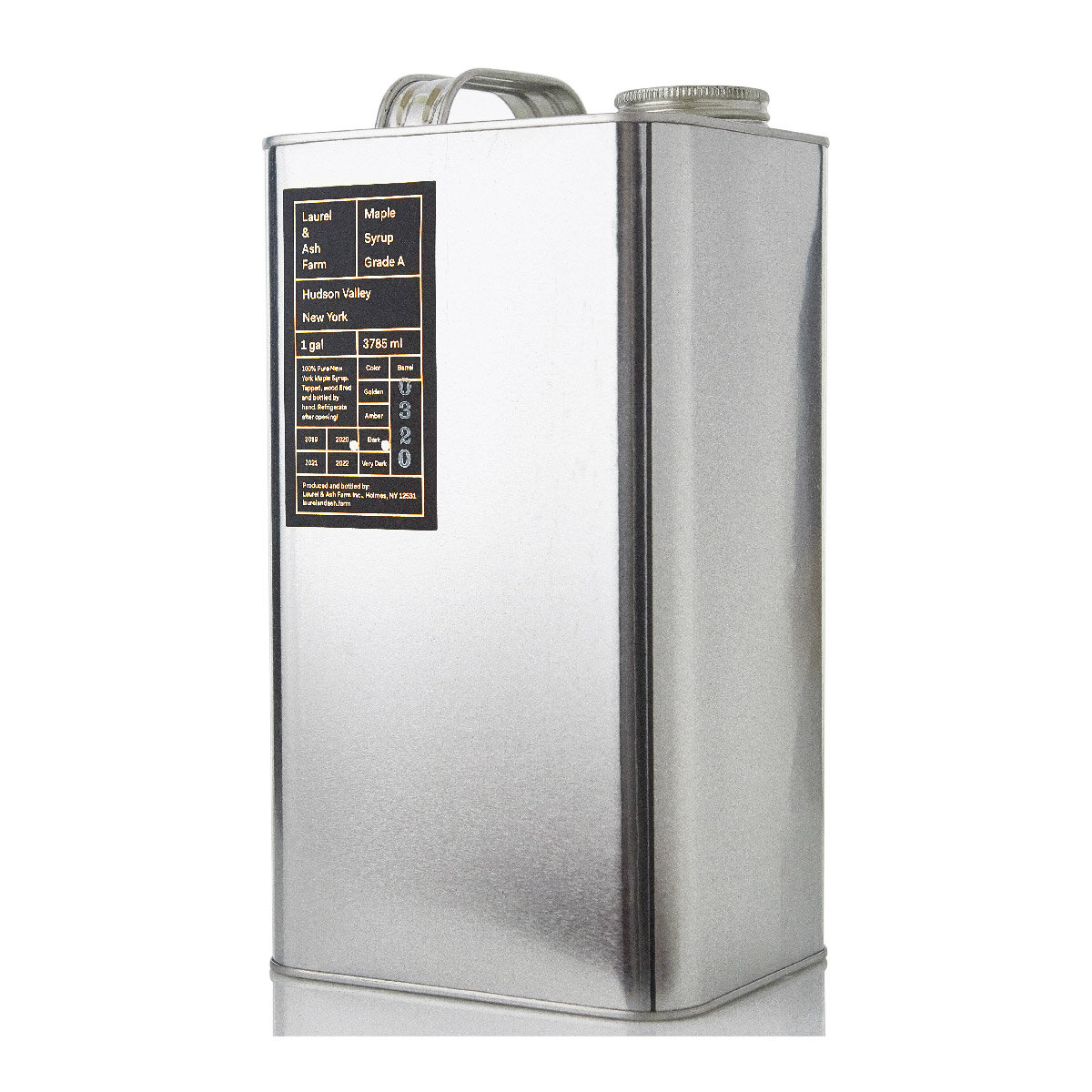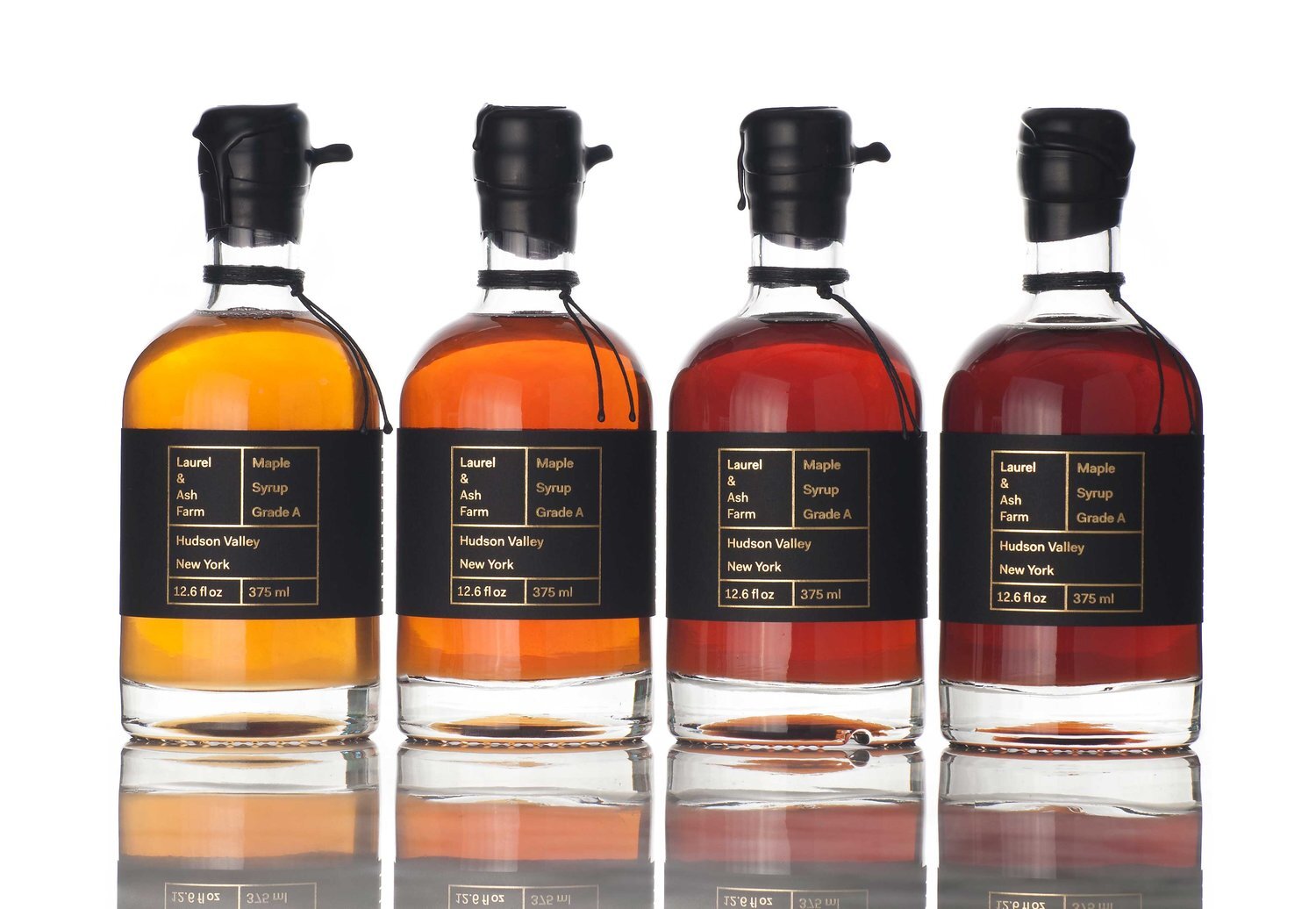Laurel & Ash Farm Goes West
PHOTO CREDIT: Bailey Beckstead
Shades of orange, red, amber and black drench the landscape of Laurel & Ash Farm during fall months, signaling that turning point for its seasonal shift towards sugaring season. Ashley Ruprecht shares these visuals as she chats over the phone about her maple syrup brand that first began in 2017 alongside husband, Jeffrey Schad in Holmes, NY. Sitting on 50 acres of land, only 60 miles outside of New York City, Laurel & Ash Farm prides itself on being a sustainable business model with complete transparency in practices. From its direct source of maple sap, to the packaging and shipping of syrup bottles, right down to an elegant waxed seal, all operations are aimed towards a benchmark of conservation. Ruprecht notes, “Everything we do is just the two us and all by hand.” She also shares, “Maple sugaring is actually an indigenous practice, and in so, we are using indigenous knowledge.”
After first meeting by chance on a photoshoot during Hurricane Sandy in 2012, Ruprecht and Schad quickly started dating and harmoniously wed on the farm itself in 2016. Rewinding a few years back though — before tying the knot and first buying their land —seeds of concept for Laurel & Ash initially grew out of an intuition to put down roots outside of New York City for weekend retreats. The couple slowly shifted to living full-time on the farm and embraced a lifestyle of growing produce, procuring wood for fires and, of course, literally tapping into the surplus of maple trees surrounding their property. Here, as an offiical partner of Sidreal Haus, Ruprecht dives deep into the advent of her brand Laurel & Ash Farm, along with what actually goes into being a full-time sugarmaker:
LtoR: Ashley Ruprecht, Jeffrey Schad & Alexis Schad.
PHOTO CREDIT: Ashley Ruprecht
Let’s talk about the genesis of Laurel and Ash? Where did it all first begin?
“It was an organic way of forming a business. It started out, like a lot of businesses do, as a hobby. It was our first year here at the property and traditionally Jeffrey had made maple syrup with his family for fun. We thought, since we had all of these maple trees along our driveway, why not? So, we tapped the trees and made our first batch of maple syrup and then scaled up from there.”
Share a bit about your day-to-day on the farm?
“Day-to-day on the farm really depends on the season. Wood chores, bottling, packaging and fulfillment, marketing and accounting happen all year long. Our evaporator runs solely on wood from our forest so there are a lot of days spent identifying trees that we will use to fire the evaporator and boil sap. Then logging, splitting and stacking 10 to 30 cords of wood each year for our sugarhouse, maple syrup production and home. When sugaring, we fill our firebox every seven minutes to keep the sap at a constant boil.
This year we had multiple hurricanes rip through our sugarbush, so we've already been out cleaning up, fixing lines and extending our main line to add another few hundred taps to our sugarbush. We'll add as many as we can before we start tapping in January. Our first sap run usually happens the last week of January to the second week of February and we start evaporating soon after. The season usually runs to late March or early April depending on the weather and the sugar content in the sap. Climate change has greatly affected the length of the sugar season for many sugarmakers.
A day in the sugarhouse usually begins at dawn and finishes late evening, but really depends on the sap flow. There are days in the season when the temps drop below freezing and the lines can freeze up for weeks on end, or the sap is coming in so fast that we boil well into the night. We have two small swimming pool sized sap tanks in our pumphouse and sugarhouse that collect and house the sap before it’s pumped into the evaporator. It takes 40 to 50 gallons of sap to make one gallon of maple syrup. So, we evaporate tens of thousands of gallons of syrup each maple season. Long steamy hours, listening to our favorite albums and firing the evaporator.”
PHOTO CREDIT: Ashley Ruprecht
Laurel & Ash is a beautiful product that’s also super chic, but the grit of the farm is very real. What are some of the most difficult parts of having a business like this?
“It’s a lot of work. It’s also interesting because I used to hate winter and fall and get seasonal depression, and now because there is so much physical labor involved with the farm, I now really look forward and enjoy that time of year. That in between time — in January and February — when you’re actually sugaring, it’s also just complete mud season. Inside our home, we’ve just completely given up on keeping the floor clean. It’s a complete farmhouse, where we walk inside with mud on our boots!
Unexpected tasks that are challenging, that most people don’t know about, include this scenario: In the middle of the night sometimes, we’ll see that we don’t have any pressure from our vacuum, which means there’s a potential hole in the line or a tap is popped. So, we’ll have to walk outside with flashlights in the middle of the woods.
Sometimes, when we go out for the day and then come back, we’ll find that the sap is already up and about to overflow. All of our lines are on a vacuum; the sap comes in through our first line into the pump house and then from there, it’s pushed up to our sugar house, but we don’t have an automatic system that pumps it up to the sugar house. So, when it gets to a certain level, we have to physically and manually pump it up.
We are also all wood-fired, so we are always stacking wood, moving wood — we call it wood chores. For the most part it’s all wood from our property through forest management. All year long is really ‘wood season. From collecting to chopping…there’s lots of chainsaw action here.”
Tell me about the offerings of Laurel and Ash?
“When we started off, we were doing maple syrup, soap and a bit of produce too, but as we’ve grown, we’ve kept the garden just for ourselves, because it’s not manageable for solely two of us to do both maple syrup and produce. As of now, we’re only offering maple syrup, but that might change again one day.
We offer all four colors of Grade A New York Maple Syrup. Producing and packing, golden, amber, dark and very dark. The difference with all of those has nothing to do with anything we do during the sugaring process, because it’s actually the sap that changes throughout the season and its microbes. The microbes will actually change the color because bacteria actually builds-up in the sap and turns the syrup darker. The taste definitely changes with color as well. The rarest is golden, and we didn’t produce any this year early season, and hopefully next season we will.
We offer 375ml and 750ml, which is like a wine bottle. We also sell gallons as well, but it’s mostly for café and restaurant use. However, we do have some customers at the farmers market that ask for it!”
PHOTO CREDIT: Bailey Beckstead
What does sustainability mean to you and your brand, and what practices of sustainably do you maintain?
“Sustainability is really important to us. From packaging to what we use to ship and the actual process of making maple syrup is probably one of the most sustainable types of farming you can do. It’s not that invasive other than lines going through the woods, meaning the tubing that carries the sap.
In looking after the forest here, as stewards of the land, we believe that this is property we are on is only for a short time. We won’t be here forever, so we want to do our best to take care of it. For the most part, what presented the most sustainable way to use the land was to do maple syrup because we had so many maple trees. Also, visually with syrup, a lot of people use green or blue tubing throughout the forest. Aesthetically, we wanted to make it so our operation blended into the forest. So, we opted to use something called a ‘smoked tubing’ that’s basically the same color as the birch and maple trees on the property. Our operation blends into the land, so people don’t even realize that the tubing is there.
As for shipping, we use a cellulose packing material. We also use shaved aspen for shipping to pack in boxes, which is a wood byproduct. We try to use anything that can be composted and not use cellophane tape – instead using paper tape. Glass bottles. We try to use the absolute least amount of plastic.”
PHOTO CREDIT: Bailey Beckstead
PHOTO CREDIT: Bailey Beckstead
Tell me a little about your design across the brand because it is indeed, super chic!
“Jeffery and I both come from design backgrounds of fashion, art and advertising. We are well versed in creating and packaging product. We worked with a good friend of ours in Germany who is a fantastic designer and tasked him with coming up with a label. His design for the initial concept of the label itself came from the divisions of farms that you see if you look from an aerial view. If you look at all the lines and boxes on our label, it mirrors what you would see of farms, from above when you fly over farmland. The boarders of each farm touch each other.
We also use Japanese whiskey bottles as inspiration for our own bottles and their aesthetic. We also have ties at the top of the bottle and it actually does have a function, because when you pour the maple syrup, most of the time, unless you’re being really careful, it drips down the bottle. The tie actually catches the syrup and catches any spill. Also, our wax tops for the bottles are stamped with our L&A logo. This year we made a break in the label, meaning before it went all the way around, and now there is space between the front label and the back label so you can see how much maple syrup is left.”
Why did you think Sidereal Haus would make a good partnership?
“Mainly, because of you! I’ve always respected your taste through the years — you’re a trend setter and we are honored that you asked us to be a part of Sidereal Haus. I love the fact that when you were talking about the design of the house, you didn’t want to buy all new pieces of furniture for décor, to keep things minimal. The other brands that are a part of Sidereal Haus also have our ethos and have a deep respect!”
To purchase Laurel & Ash Farm maple syrup, please check out its website.



